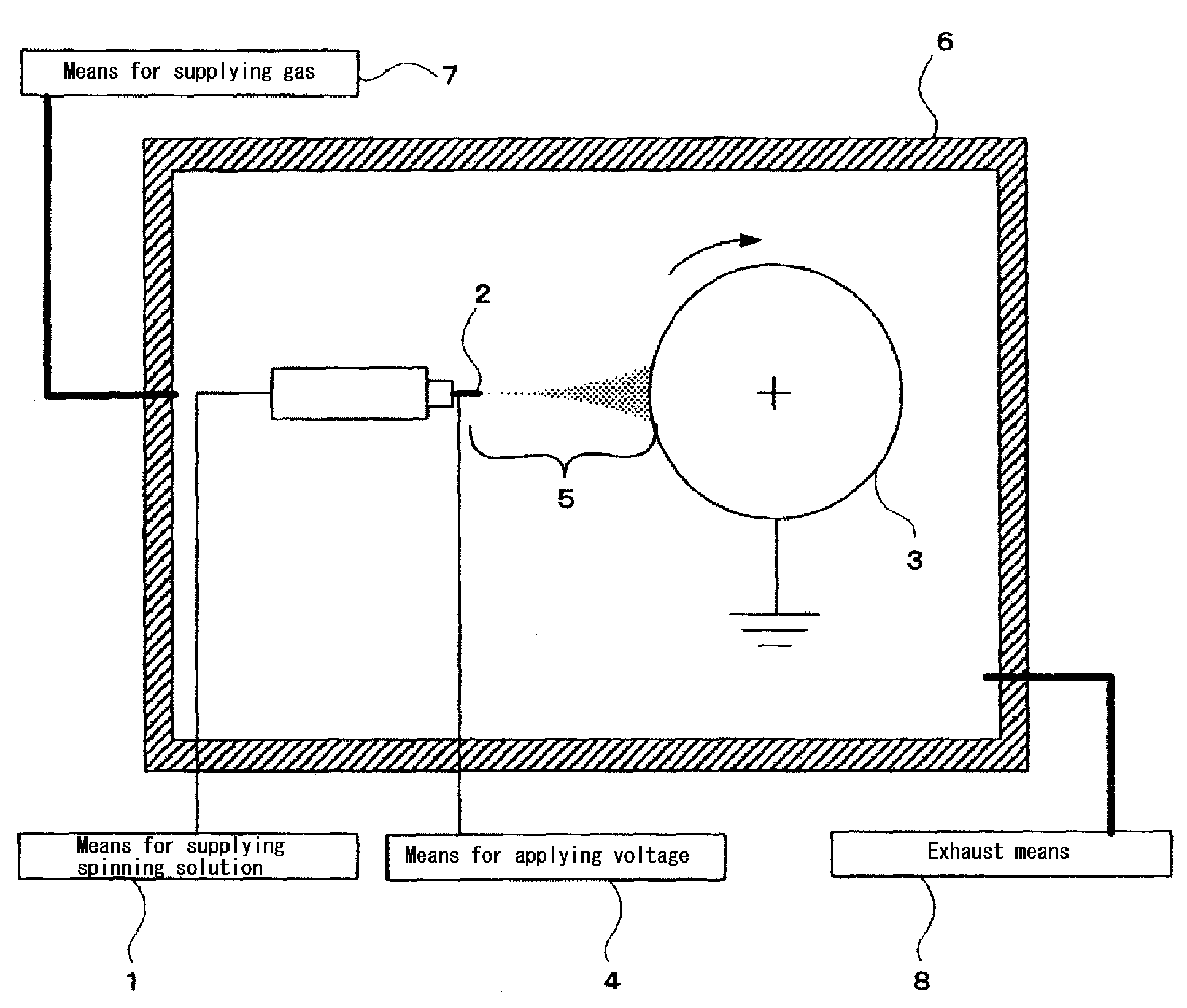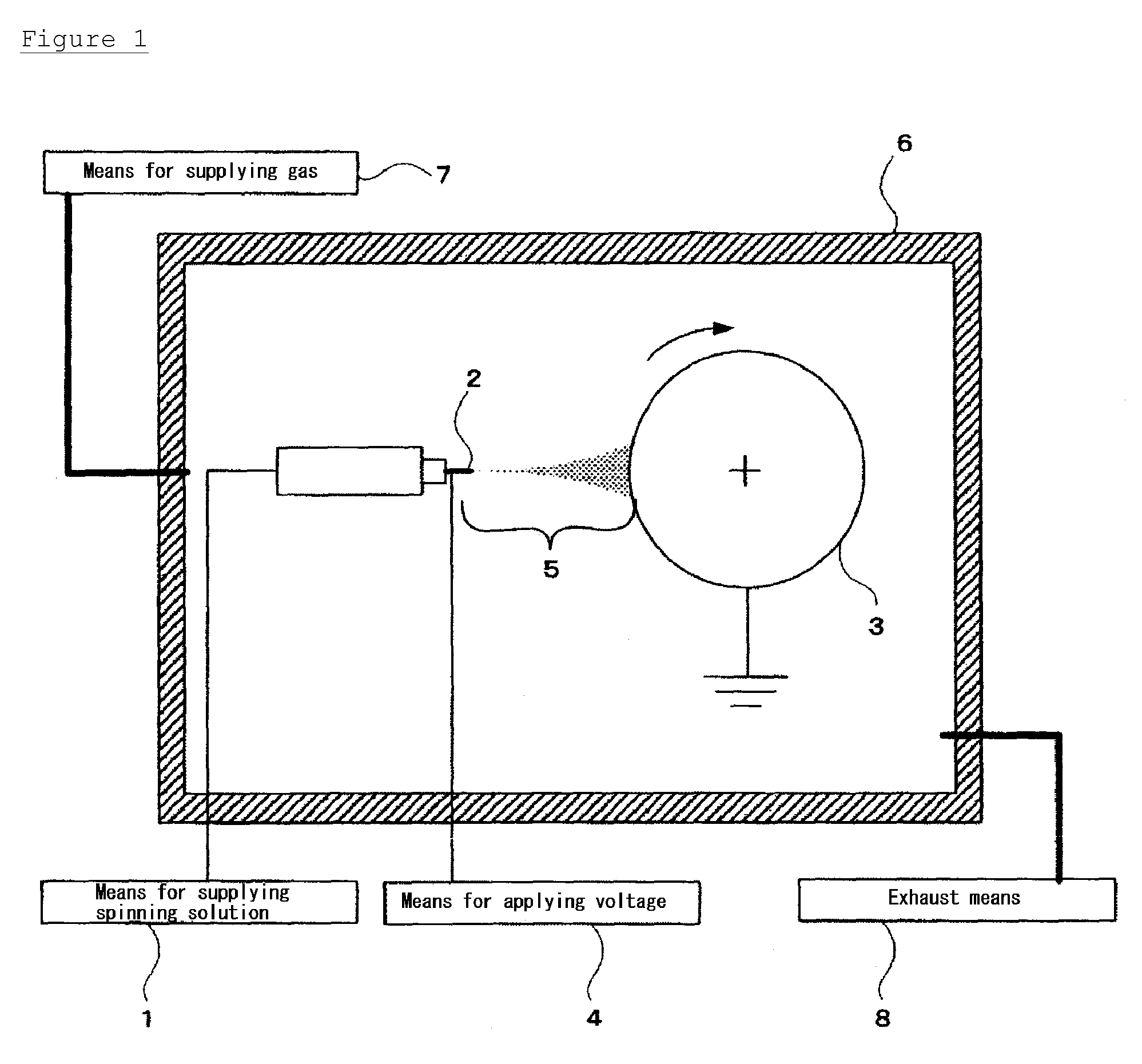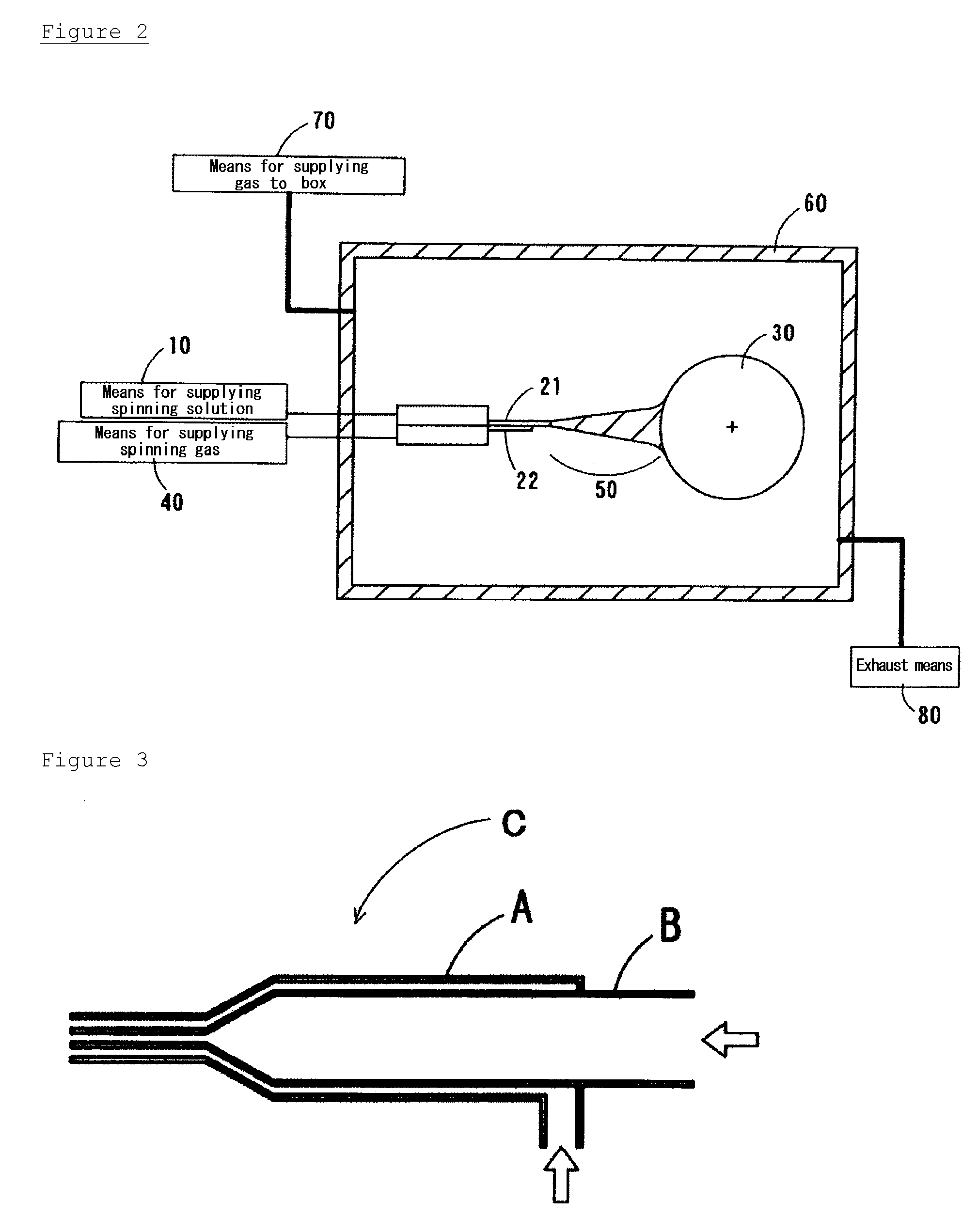Process for manufacturing organic fibers containing inorganic component and nonwoven fabric containing the same
- Summary
- Abstract
- Description
- Claims
- Application Information
AI Technical Summary
Benefits of technology
Problems solved by technology
Method used
Image
Examples
example 1
(1) Preparation of Inorganic Spinnable Sol Solution
[0060]Tetraethoxy silane (TEOS), ethanol, water, and hydrochloric acid were mixed at a molar ratio of 1:5:2:0.0025 to prepare a spinnable silica sol solution. More particularly, 2.5 moles of ethanol were mixed with respect to 1 mole of tetraethoxy silane, and a mixture of 2 moles of water, 0.0025 moles of hydrochloric acid, and 2.5 moles of ethanol was further added dropwise thereto with stirring to prepare a starting material. This starting material was reacted at 100° C. and at a stirring speed of 300 rpm for 15 hours while circulating cooling water, and concentrated to a concentration of 44%, as a solid content of silicon dioxide, to prepare a sol solution. The concentrated sol solution was polymerized by maintaining a temperature of 60° C. for several hours to obtain the spinnable silica sol solution (weight average molecular weight: 12,000). This spinnable silica sol solution had a viscosity of 0.32 Pa·s.
(2) Preparation of Spin...
example 2
[0063]The procedures described in Example 1 were repeated, except that a mixture of tetraethoxy silane (TEOS) and 3-glycidoxypropyl trimethoxysilane (GPTMS) [TEOS:GPTMS=9:1 (molar ratio)] was used as the silica material, and that this silica material, ethanol, water, and hydrochloric acid were mixed at a molar ratio of 1:5:2:0.0025 to prepare a spinnable silica sol solution (weight average molecular weight: 15,000, viscosity: 1.6 Pa·s), to produce a nonwoven fabric (mass per unit area: 5 g / m2) composed of silica-containing acrylic fibers (average fiber diameter: 320 nm). The spinning solution had a viscosity of 0.9 Pa·s.
example 3
[0064]The procedures described in Example 1 were repeated, except that the concentrated sol solution was maintained at 60° C. for 5 hours to obtain a spinnable silica sol solution having an increased molecular weight (weight average molecular weight: 14,000) and a viscosity of 0.56 Pa·s, to produce a nonwoven fabric (mass per unit area: 5 g / m2) composed of silica-containing acrylic fibers (average fiber diameter: 320 nm). The spinning solution had a viscosity of 0.9 Pa·s.
PUM
| Property | Measurement | Unit |
|---|---|---|
| Fraction | aaaaa | aaaaa |
| Molecular weight | aaaaa | aaaaa |
Abstract
Description
Claims
Application Information
 Login to View More
Login to View More - Generate Ideas
- Intellectual Property
- Life Sciences
- Materials
- Tech Scout
- Unparalleled Data Quality
- Higher Quality Content
- 60% Fewer Hallucinations
Browse by: Latest US Patents, China's latest patents, Technical Efficacy Thesaurus, Application Domain, Technology Topic, Popular Technical Reports.
© 2025 PatSnap. All rights reserved.Legal|Privacy policy|Modern Slavery Act Transparency Statement|Sitemap|About US| Contact US: help@patsnap.com



